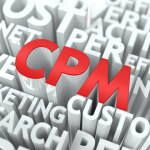 Written by Peter Portanova, Project Analyst for Source One Management Services
Written by Peter Portanova, Project Analyst for Source One Management Services
The concepts of reach and frequency have long guided the way marketers approach advertising, and when multiplied, they provide the calculation for Gross Rating Points (GRPs) to measure and evaluate the success of your campaigns. However, the rise of programmatic ad buying (automated buying based on real time data analysis of competitive rates) forces marketers to reconsider their historical understanding of success in marketing, and encourages the consideration of new and potentially more effective metrics.
GRPs are hugely important across a variety of marketing channels, exclusive of programmatic buying. The ideology that more GRPs means greater success is severely flawed, and by using such a calculation in a highly targeted and customized solution like programmatic buying, one misrepresents the technology’s true value. However, instead of arguing the utility of GRPs, it is more critical to consider alternative means of success in marketing and how embracing programmatic can revolutionize your approach to online advertising, while driving a variety of critical KPIs.
Programmatic buying is growing quickly, and is responsible for billions of dollars in digital media placements. Programmatic buying is the intersection where data and advertising truly meet, with engineers, traders, and data-management platforms replace traditional sales planners. Agencies would like you to believe that their programmatic efforts reduce overall costs, but the truth of the situation is that, when viewed holistically, programmatic buying is actually more expensive.
Implementing programmatic buying efforts does have its merits, and agencies are quick to note that initial costs can be negated quickly. However, for programmatic buying to reach its maximum potential, marketers and advertisers must learn to move past the traditional reach and frequency mindset, and consider the long-term advantages of highly targeted placements. In fact, industry experts note that using programmatic buying to place more advertisements decreases transparency, which can lead to fraudulent placements. In using programmatic buying to deliver a highly targeted message to the right individual at the right time, brands are able to increase their visibility to the appropriate segments, increasing potential brand engagement.
Marketers must begin to understand programmatic buying from a holistic perspective. Why is this more expensive? Does it involve fewer people? Most marketers are shocked that programmatic buying proposals suggest fewer advertisements at a greater cost. While inventory is cheaper in programmatic buying compared to manual buying, there are substantial costs of doing business to implement and manage these efforts. In an article on AdAge, a media agency executive said, “Five full time employees are needed to spend $100 million national broadcast budget, while the same number would be needed for a $5 million programmatic buy.”
Understanding the discrepancy in FTEs and costs becomes more complicated when you also factor agency commissions into the equation. The employees required to manage a programmatic buy are in far greater demand, having a unique skillset that commands salaries 50-100% greater than manual buyers. The technology and the platforms do not eliminate the need for human input, and therefore it is critical to entice highly skilled employees for retention. Traditional full-service agencies have seen these employees move quickly to digital agencies that have a greater focus on new technologies, including programmatic buying.
The true cost of programmatic buying becomes noticeable when considering agency commissions that are charged to simply breakeven. The same agency executive interviewed by AdAge stated that, with a budget of $100 million, break-even points begin at 1% with TV, and quickly jump to 10-12% with programmatic. It is also worth noting that the 12% commission is only the break-even, with many agencies charging a rate of around 20%, to turn a meager profit.
There is a substantial cost of placing media through a programmatic partner. AdAge refers to these costs as an “intermediary tax” which accounts for all the transactions that take place to make a programmatic buy occur. With 7% to 20% taken by ad exchanges, another 10% to 20% taken by automated software providers, and then another 15% for the data-management platforms, there is potential that only $.50 of every dollar will reach the publisher. While these rates may seem expensive, there is value in using programmatic buying; however, the marketer should be fully aware of the intended use of programmatic, with no expectation that they are receiving a more targeted solution for a lower price.
While so far we have discussed mostly the potential benefits (and drawbacks) of programmatic buying, there is always a need to manage costs. Consider the following best practices when working with your agency to ensure greater transparency in your agreement.
Contract Language
- When contracting with your programmatic buying partner, ensure that language exists around specific rates. Furthermore, consider a period where you can renegotiate these rates to be more favorable.
Redundant Services
- Prior to considering your programmatic needs, understand the services you require and what you may need outside of traditional manual buying. When working with multiple vendors (which is common with programmatic buying), there is potential to be charged for the same service multiple times.
Liberate your Data
- Unless specifically outlined, your data may not belong to you after working with a particular partner. If you are unable to retrieve your data during any part of the process, the supplier immediately gains tremendous advantage.
Understand your Options
- Do you need managed service, or do you need self-service? In a self-service agreement, the vendor charges for the use of their technology, but does not charge for any resources associated with operating the platform. A managed option typically has charges for not only the technology, but also the management fees associated with run and execute a campaign.
Consolidate
- Find a partner capable of providing you with a variety of services, and consolidate your marketing to that one agency. Using separate agencies to plan and execute your manual and programmatic buys is inefficient, and unless information is shared freely across agencies (it probably will not be), the effectiveness of both operations will be hindered. Consolidation also allows for better reporting and recognition of opportunities across channels.
As for the future of programmatic buying? It’s only anticipated to grow. EMarketer predicts total programmatic buying spend to exceed $20B in 2016. When it comes to digital marketing, there is no “one size fits all.” While programmatic buying is typically more expensive than other traditional tactics, there’s no doubt the method offers significant ROI in the form of operational speed and efficiency and increased scale and targeting. Like any other agency sourcing engagement, do your due diligence when looking for the right partner for your programmatic buying requirements. Beyond assessing agency scale, technology and data analytics, and skillsets, take steps to establish a strategic client-agency relationship. This begins with strong contract language that drives further value from your programmatic efforts and continues with fostering ongoing communication and transparency with your agency.
Peter Portanova is a marketing category enthusiast and Project Analyst for Source One Management Services. He is an expert at developing RFPs and executing strategic sourcing strategies for clients in a wide array of industries, specializing in navigating the complexities of the Marketing spend category. Click to learn more about Source One’s Marketing Category expertise.









